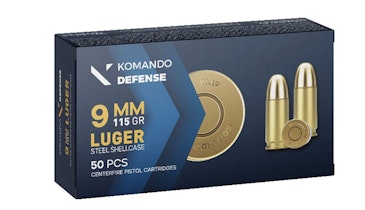It is the rare retailer who doesn’t know whether his or her business is profitable. Accounting statements or even the operation’s tax returns often provide that information. But how many are aware that some customers simply don’t make money for their businesses?
That’s right. Few firearms retailers, business owners or managers are aware whether their “best” customer or customers are generating profits sufficient to warrant the degree of services demanded or provided.
The solution is also simple: Make those customers profitable or cut them loose. Obviously, improving a customer’s value to the business is not an easy task, but it usually begins with the discovery of just how much a customer costs the shooting sports equipment business.
Keeping Tabs on Costs
The often repeated 80/20 rule states that a large majority (80%) of any business’s earnings come from a very small number (20%) of its customers. In other words, most tactical retailers make almost all of their money from very few of its customers.
Customers who don’t necessarily buy a lot but who also don’t demand a lot of service may be good customers, while other customers might buy more but require so much assistance that they’re costing the operation money.
The best way to research a customer and evaluate his or her profitability is to keep track of all interactions with that customer over a period of time. One week is obviously not enough, and a year is too long. Most customers’ habits can be tracked within two- to four-month timeframes.
Gross profit margins are the most commonly used factor, but it cannot be immediately assumed a customer is not profitable because their margin is below average. That’s where other factors, including costs, come in.
Many shooting sports equipment retailers allocate some amount of their overhead costs to customer service. More often, however, costs reflect only the cost of the product sold or the services performed. Missing from this measurement is the time, support, effort and ultimately the total cost required to meet the customer’s needs. Analysis that reveals the total cost by customer rather than by product or service often produces startling results that will shift the customer profitability discussion from anecdotal or gut feelings to a discussion utilizing quality information.
Cost accounting is the process of allocating all of the shooting sports equipment operation’s costs associated with generating a sale, performing a service, etc., both direct and indirect. Direct costs include such things as the total wages paid workers, the salaries of supervisors, supplies expended, etc. Indirect costs are all of the other expenses associated with keeping the operation going.
Establish a System; Create a Goal
An analysis of customer profitability compares the costs of all of the activities used to support a customer or group of customers with the revenue generated by that customer or group. Activity-based costing techniques can be used to determine the profitability of customers. Going one step further, activity-based costing can also be used to estimate the cost of doing business with particular customers or with groups of customers that require similar service levels.
In determining customer profitability, it is usually not practical to identify the profitability of individual customers unless there are only a few of them. Therefore, customers may be grouped by size, industries, and market or distribution channel.
To set up an effective cost accounting system, the help of an accountant or CPA might be advisable. Cost accounting can, after all, get fairly complicated. The money spent for professional guidance will be well worth it, leaving only the question of what to do about any “bad” customers.
Turning Bad to Profitable
Once discovered, the first step to turning unprofitable customers into valuable assets is determining whether the relationship can be improved. An owner or manager who believes in holding onto every customer, no matter what the cost, may never see the shooting sports equipment business reach its maximum earning potential.
Before asking any customer to take his business elsewhere, efforts should be made to “reform” the customer. There is no clear rule of thumb. Each situation and each customer is different. If the problem is one of slow pay with a small customer, further sales or deliveries can be postponed until they’ve paid up.
The same approach can work for larger customers if the tactical retailer has enough leverage. Alternatively, a price increase to offset the higher cost of extending credit might be called for.
Worried about the customer going elsewhere? Sometimes that’s a good thing. Problem customers become problems for competitors.
Acquiring and Keeping Profitable Customers
According to many experts, it is five times more profitable to spend marketing and advertising dollars to retain current customers than it is to acquire new customers. In years past, the importance of focusing on customer retention was not as important — “stickiness” came naturally. We had a personal connection with our service providers, and the thought of shopping at another store or using an unfamiliar service provider would have never crossed our minds.
That has all changed now. Customer loyalty has disappeared, and large corporations and virtual storefronts are forced to ask the millions of disloyal customers what caused them to stray. However, there is a solution — and, once again, it involves costs.
Do you know how much of your operation’s resources are allocated to marketing and new customer acquisition? Most importantly, do you know how much you should be spending and at what value it becomes un-economic?
Most small businesses use a combination of guesswork, perceived funds available, and gut feel to set their marketing budgets. Understanding the lifetime value of new customers has allowed many tactical retailers to take a longer-term and more realistic view of attracting new business to make their companies more effective and profitable.
Customer acquisition cost is calculated by dividing total acquisition expenses by the total number of new customers. Not too surprisingly, there are different opinions as to what constitutes an acquisition expense. For example, rebates and special discounts do not represent an actual cash outlay, yet they have an impact on cash flow (and presumably, on the customer).
The specific calculation depends on the nature of the customer relationship, which can be divided into two categories. In contractual or retention situations, customers who do not renew are considered lost for good.
The other category involves customer migration situations. In customer migration situations, a customer who does not buy (in a given period or from a given promotion) is still considered a customer because they may very well buy at some point in the future.
In customer retention situations, the tactical retailer usually knows when the relationship is over, although the firm may not know when the relationship is over (as far as the customer is concerned).
To compute the cost of acquiring a customer, the operation’s entire cost of sales and marketing over a given period, including salaries and other headcount-related expenses, is divided by the number of customers acquired in that period.
In order to compute the lifetime value of a ustomer, the gross profit margin expected to result from that customer over the lifetime of the relationship is computed. Gross margin would obviously take into consideration any support, installation and servicing costs over the projected life of the customer relationship.
Solutions and More Solutions
There are a number of strategies for resolving the “Best Customer/Least Profitable Customer” conundrum, including:
* Increasing the profitability of already profitable customers
* Identifying unprofitable customers and realigning them to better manage costs
* Pricing products and services more effectively
* Improve internal processes to reliably predict the impact of business decisions on total system costs
* Improve negotiation processes with customers (discounts, quantity of deliveries, order size, payment terms, etc.)
The one thing many shooting sports equipment business owners or managers often ignore is whether their best business decision may actually involve firing some of their worst customers. While this might seem like an illogical suggestion, having the wrong customers can be costing the firearms business in unexpected ways and holding it back from real success with the temptation of short-term profits.
The operation may be stuck in a raw deal with minimum profit margins, losing the ability to service new and more profitable customers. The operation might also experience employee turnover due to burnout from servicing abusive or demanding customers, leaving the business with the expense of recruiting and training new workers.
Part of the challenge faced by many tactical business owners or managers is how to extract the operation from those relationships without burning bridges or creating enemies (if they haven’t already).
Accounting for costs means more realistically pricing goods and services to ensure costs are passed on to the customer. Cost accounting can also prove invaluable when it comes to determining actual profits or finding out what a particular job actually cost. If detailed enough, that cost accounting can reveal what your “best customer” actually cost you and your firearms business.






